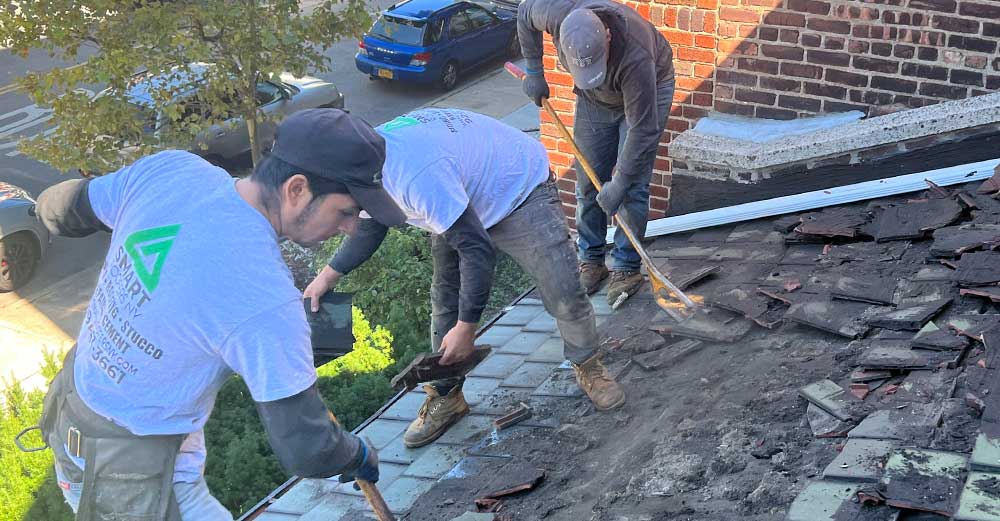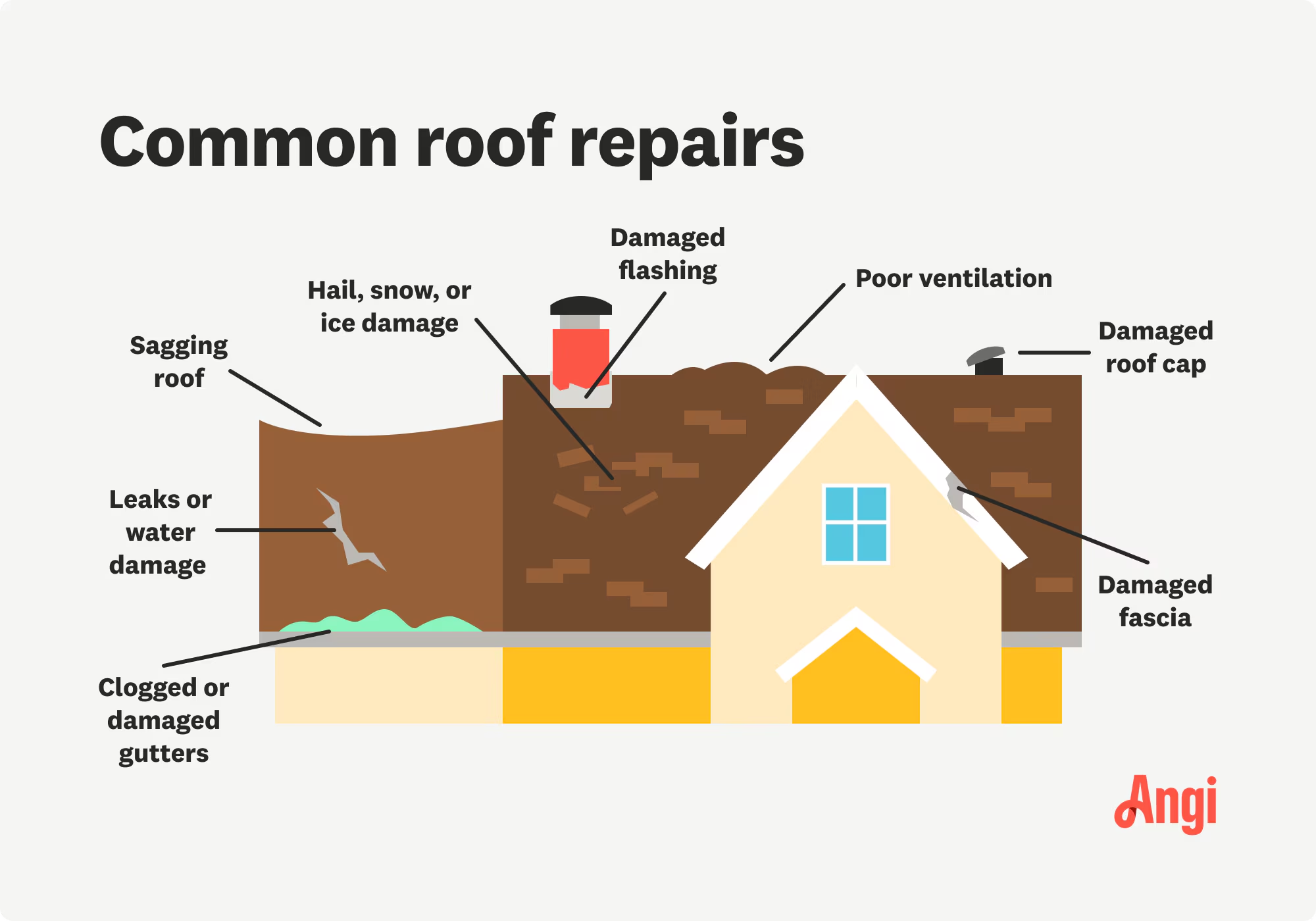Roofers Oahu: Competent Specialists for Roof Installations and Fixes
Wiki Article
Comprehending the Different Kinds Of Roofing Systems: A Comprehensive Overview for Homeowners
With an array of choices-- ranging from the conventional gable to the modern level-- each type offers distinct benefits and obstacles that should align with the house owner's environmental factors to consider and particular requirements. As we explore the details of different roofing kinds, it becomes obvious that one size does not fit all; the right choice might stun you.Gable Roofings
Gable roofing systems, defined by their triangular form, are amongst one of the most popular roof styles because of their simpleness and effectiveness in dropping water and snow. This design includes two sloping sides that satisfy at a ridge, enabling for effective drainage and reducing the threat of water accumulation. The high pitch frequently connected with saddleback roofs enhances their capability to manage hefty precipitation, making them suitable for various climates.In enhancement to their sensible advantages, gable roof coverings supply aesthetic adaptability. They can be adjusted to numerous architectural designs, from traditional to modern homes. The design can additionally accommodate added functions such as dormer home windows, which improve all-natural light and ventilation in the attic room room.
Additionally, saddleback roofs provide enough room for insulation, adding to energy efficiency. House owners can select from a range of roof covering products, including asphalt roof shingles, metal, and tiles, further boosting personalization options.
Despite their advantages, gable roofs might need additional assistance in areas vulnerable to high winds or heavy snowfall. On the whole, the saddleback roof continues to be a preferred option because of its blend of performance, resilience, and visual allure.
Flat Roofs
Flat roofing systems are often acknowledged for their minimal layout and sensible applications, particularly in industrial and industrial setups (oahu roofing). These roofing systems include a horizontal or nearly horizontal surface, which permits for easy building and construction and versatile space use. While they may do not have the visual appeal of pitched roofing systems, level roofing systems supply various benefits, specifically in metropolitan settings where making the most of room is essentialOne of the main advantages of level roofs is their availability. House owners can use the roof space for different functions, such as rooftop gardens, terraces, or photovoltaic panel installations. Furthermore, level roofs are usually more affordable to install and preserve compared to their sloped counterparts, as they require fewer materials and labor.
Common products used for level roof coverings consist of built-up roof (BUR), changed bitumen, and single-ply membranes, each offering unique benefits. Overall, level roofing systems offer as a functional and versatile choice for several property owners and businesses alike.
Hip Roofs
Hip roof coverings are identified by their sloped sides that converge on top, developing a ridge. This layout stands out from saddleback roofs, as all four sides of a hip roofing incline downwards toward the wall surfaces, giving a more steady framework. The angle of the slopes can vary, permitting adaptability in building appearances and functionality.Among the main benefits of hip roofs is their ability to withstand heavy winds and unfavorable weather. The sloped surfaces enable much better water drain, reducing the risk of leakages and water damage. Additionally, hip roof coverings offer enhanced attic room room, which can be utilized for storage and even exchanged comfortable areas.
Nevertheless, creating a hip click for more roofing system can be much more complicated and expensive than simpler roofing system types, such as saddleback roofs. The extra material and labor associated with creating the inclines and making sure correct architectural stability can cause higher expenses. Regardless of these downsides, several house owners favor hip roofing systems for their sturdiness, visual charm, and potential for energy performance.
Mansard Roofing Systems
Mansard roof coverings, commonly identified by their one-of-a-kind four-sided style, function 2 slopes on each side, with the lower slope being steeper than the top. This architectural design, stemming from France in the 17th century, is not just cosmetically attractive yet useful, as it optimizes the usable area in the top floorings of a structure. The steep reduced slope enables for even more headroom, making it an ideal option for loft spaces or attics, which can be exchanged living spaces.Mansard roofs are defined by their flexibility, accommodating different architectural styles, from standard to contemporary. They can be created with different products, consisting of asphalt roof shingles, slate, or metal, offering property owners with a variety of choices to match their budget plans and choices. In addition, the style permits the assimilation of dormer windows, enhancing natural light and air flow in the upper levels.
Nonetheless, it is crucial to consider the prospective disadvantages. Mansard roofing systems may require even more upkeep due to the complexity of their layout, and their high slopes can be testing for snow and rainfall overflow. Generally, mansard roofs integrate sophistication with usefulness, making them a preferred option amongst homeowners seeking unique architectural functions.
Dropped Roofing Systems
As home owners significantly look for simplicity and performance in their architectural layouts, dropped roofings have actually emerged as a prominent option. Defined by a solitary sloping aircraft, a shed roof covering offers a minimal visual that matches various home designs, from modern to rustic.One of the main benefits of a shed roofing system is its simple building, which frequently translates to lower labor and material costs. This design enables effective water drain, lowering the danger of leaks and water damages. Furthermore, the upright incline provides enough area for skylights, boosting all-natural light within the interior.
Dropped roofs also supply flexibility in terms of usage. They can be effectively incorporated right into enhancements, garages, or outdoor structures like pavilions and sheds. In addition, this roof design can suit various roofing materials, including steel, asphalt roof shingles, or perhaps green roofing systems, lining up with green campaigns.
However, it is crucial to take into consideration regional environment conditions, as hefty snow tons might necessitate changes to the roofing system's angle or structure. Overall, shed roofing systems present a functional and visually pleasing choice for home owners wanting to take full advantage of performance without jeopardizing style.
Final Thought


Gable roofs, identified by their triangular form, are amongst the most prominent roof designs due to their simplicity and efficiency in shedding linked here water and snow. oahu roofing. The high pitch generally connected with gable roofs enhances their capability to deal with heavy precipitation, making them ideal for numerous environments
While they may lack the aesthetic charm of pitched roofs, level roof coverings use countless benefits, particularly in urban settings where taking full advantage of space is vital.

Report this wiki page